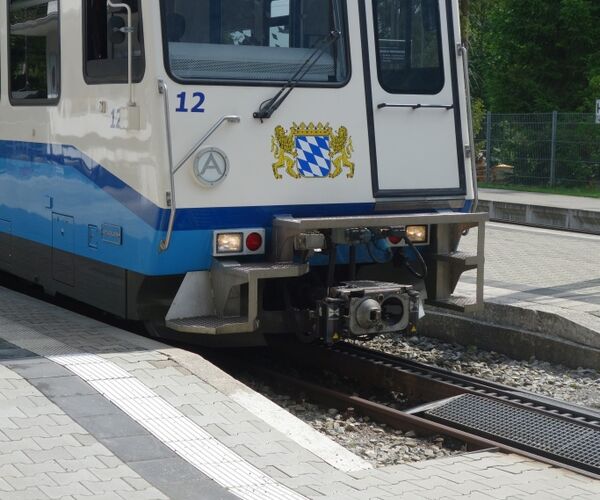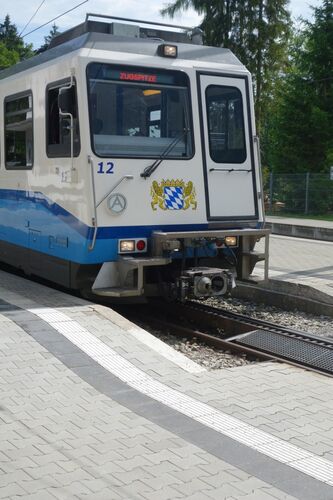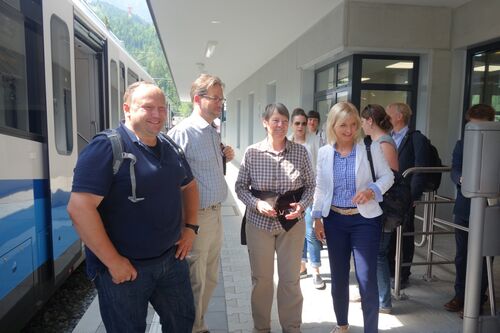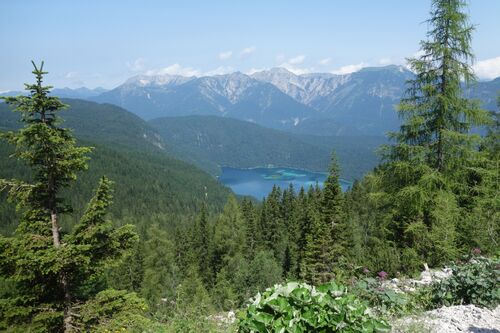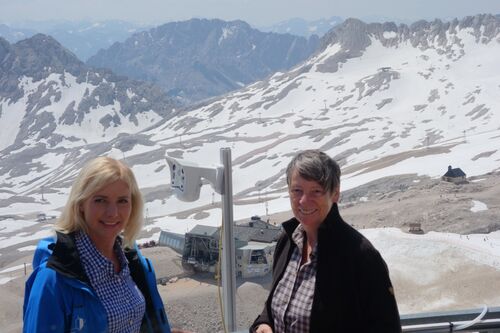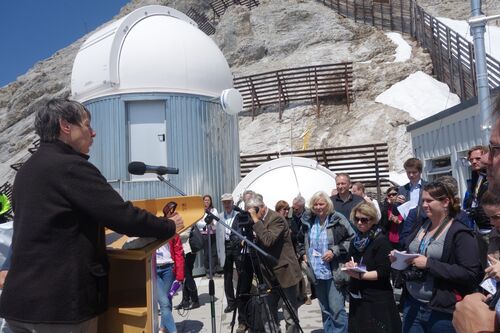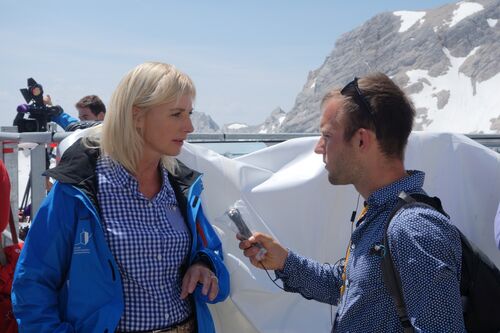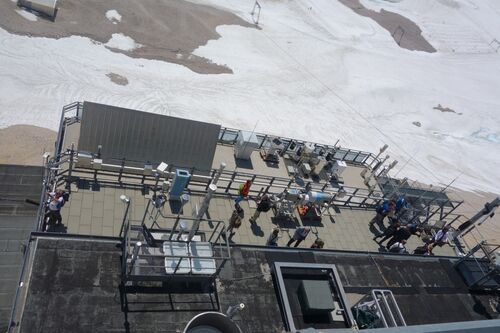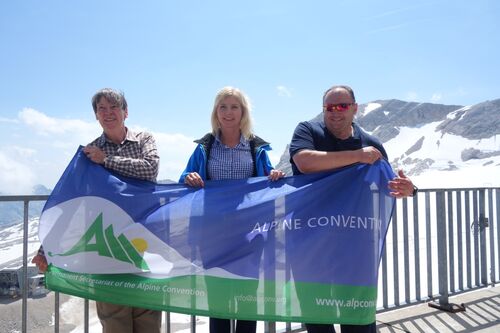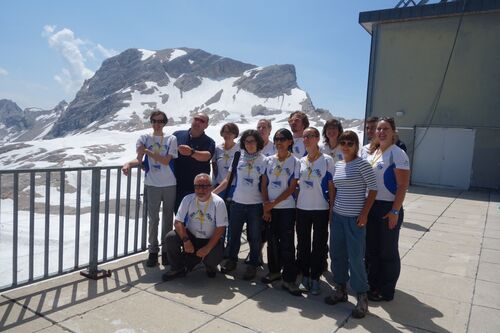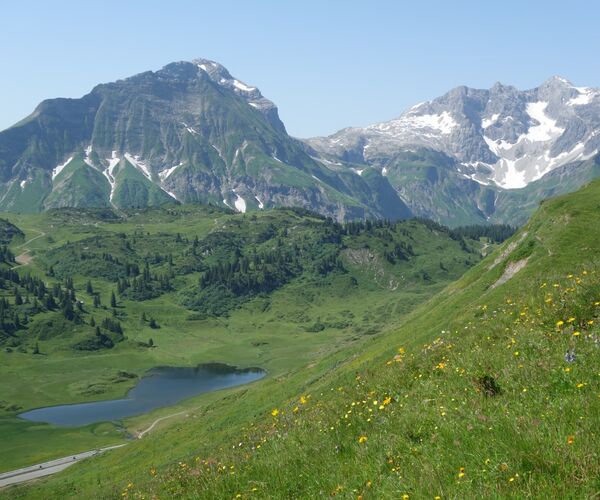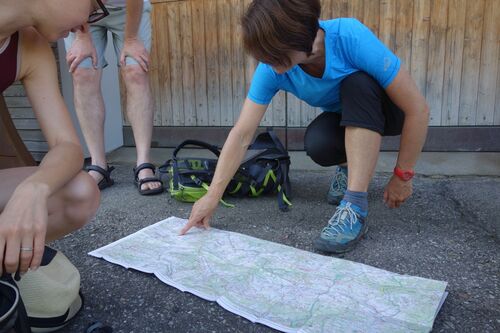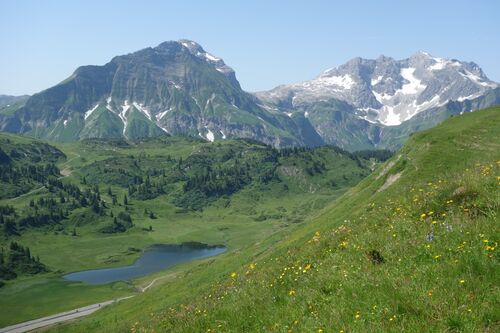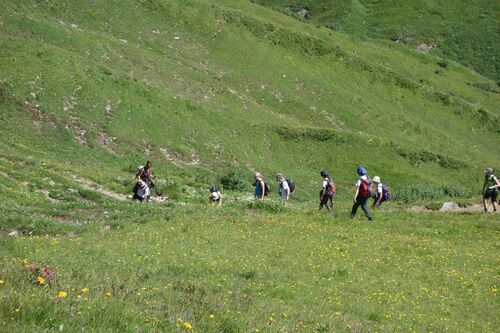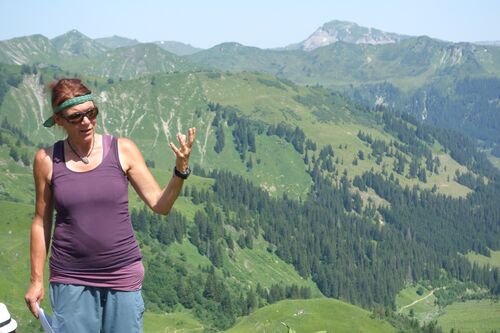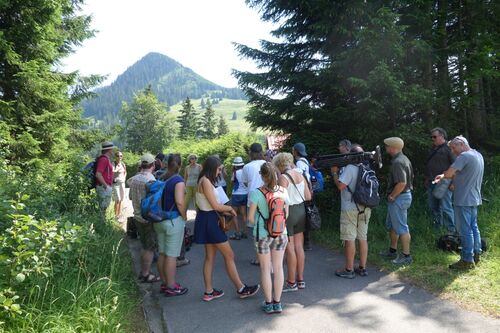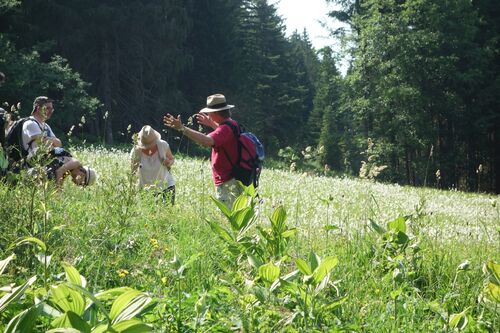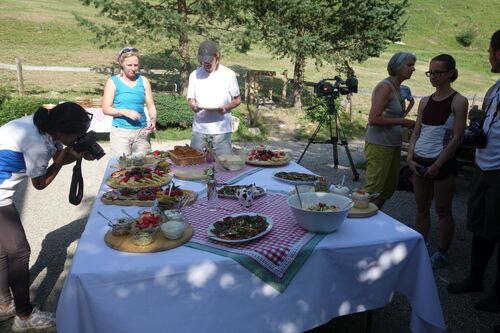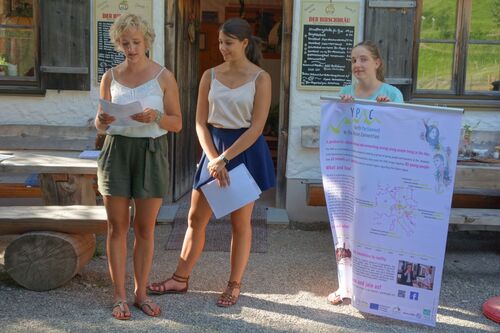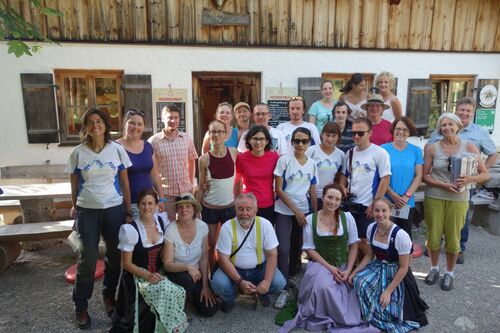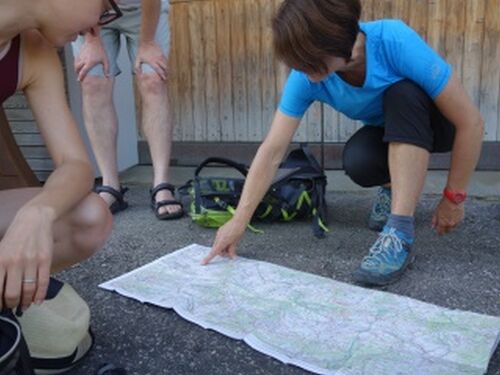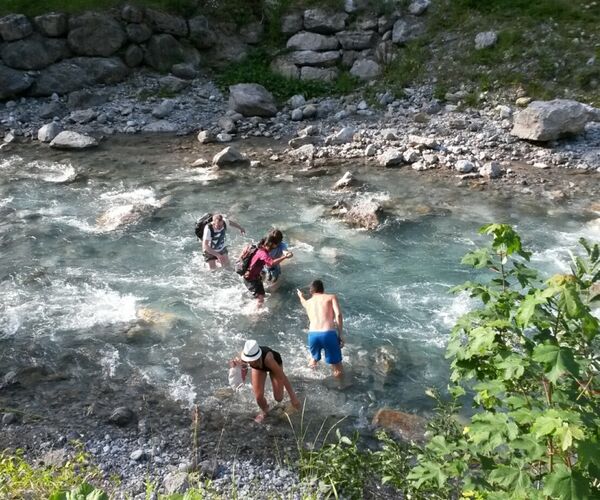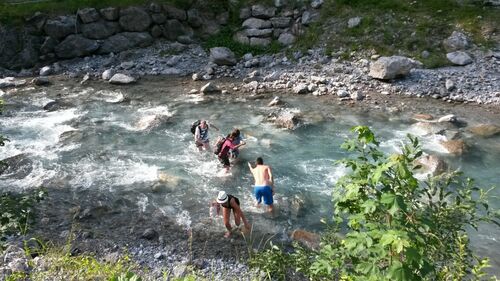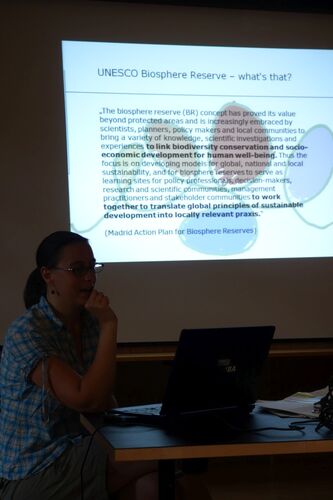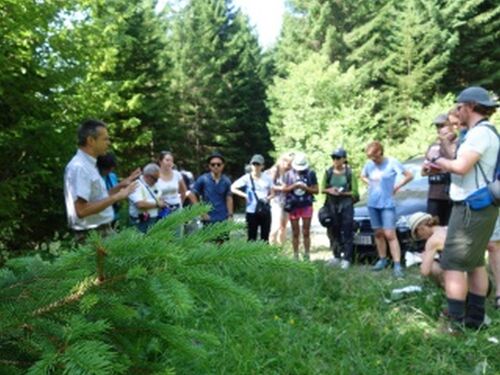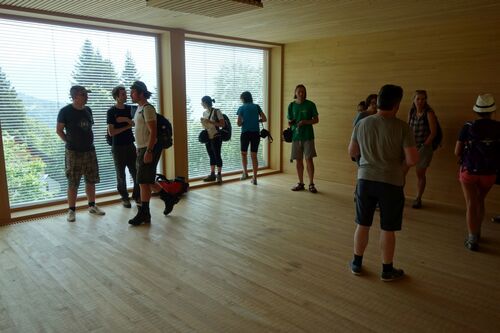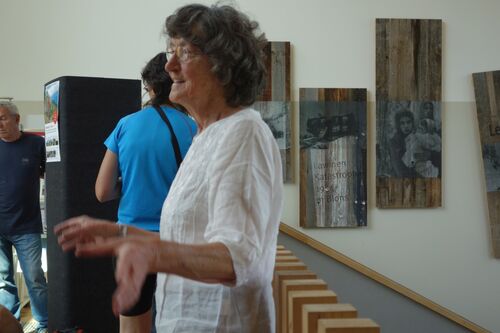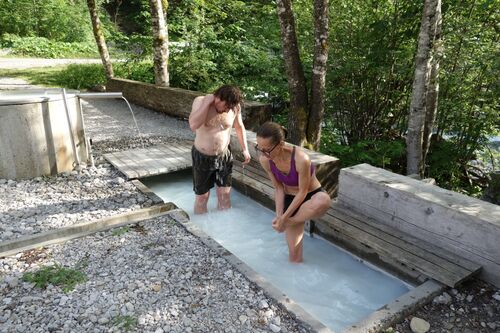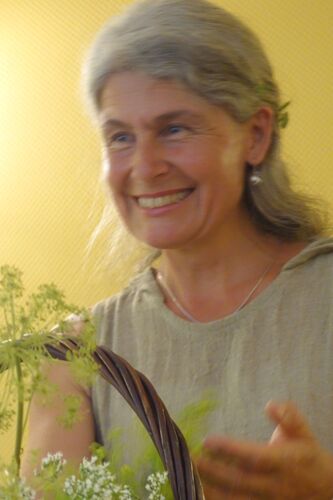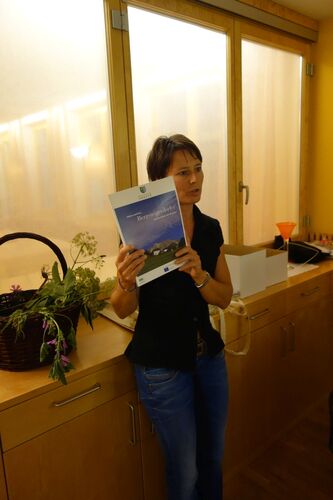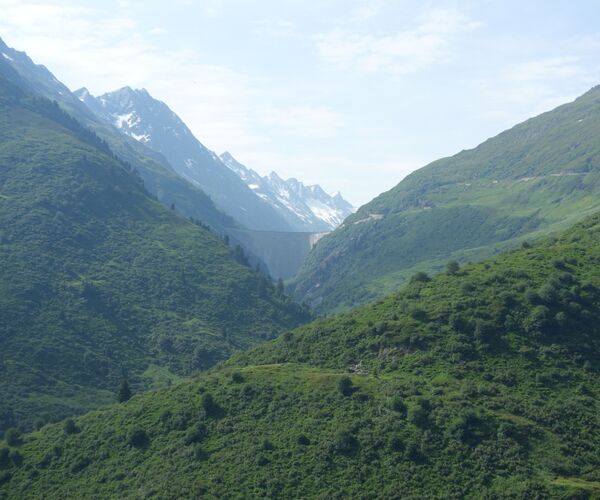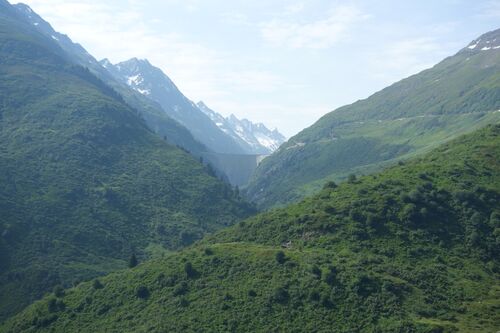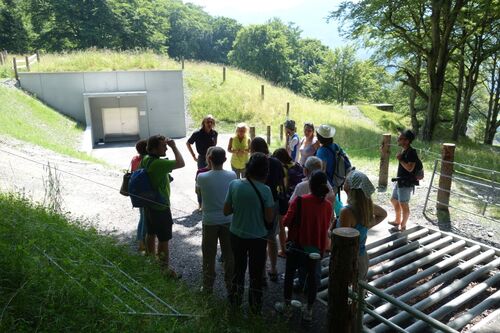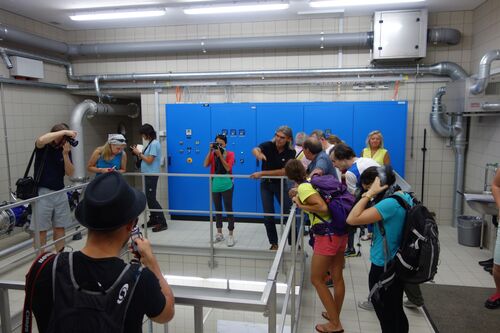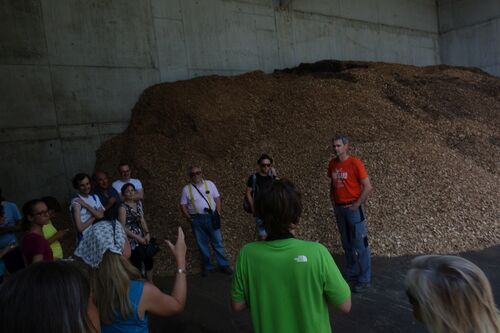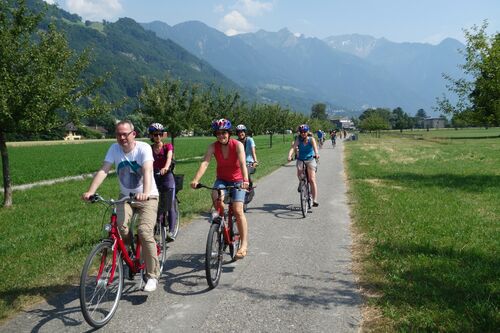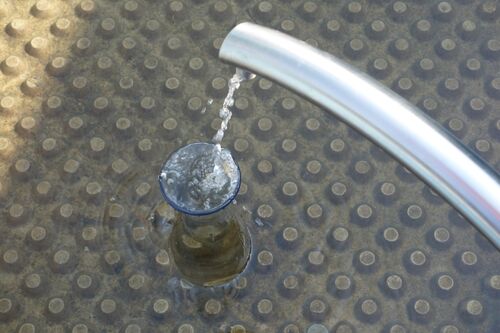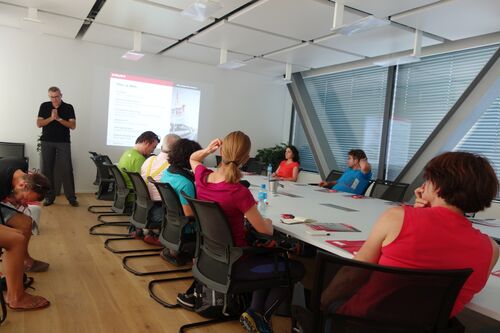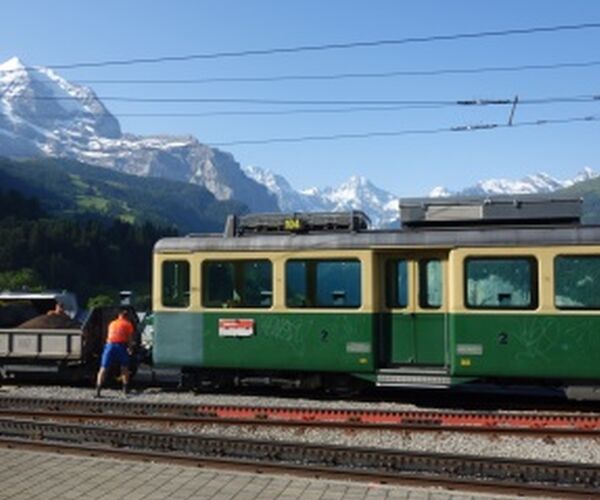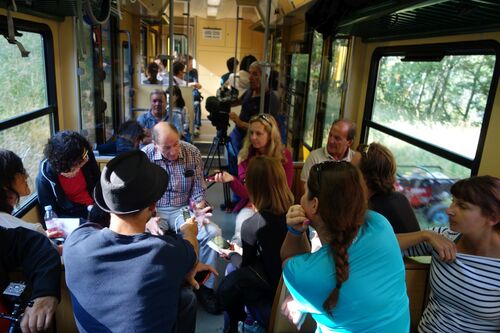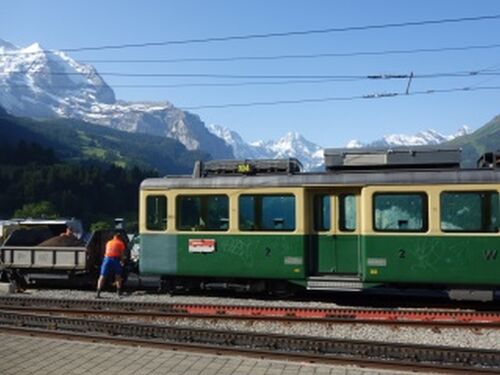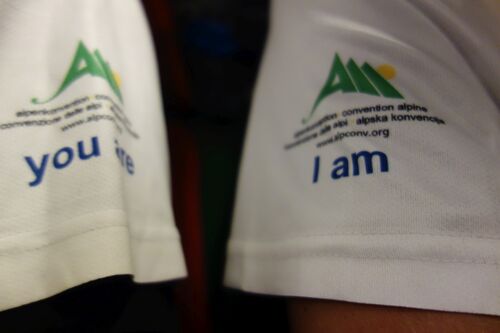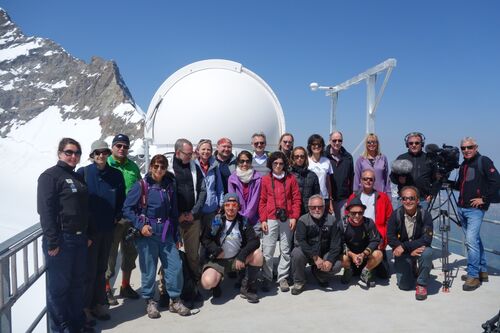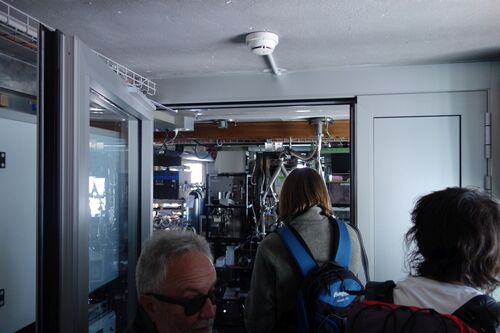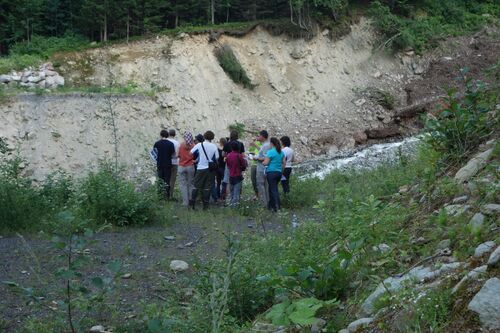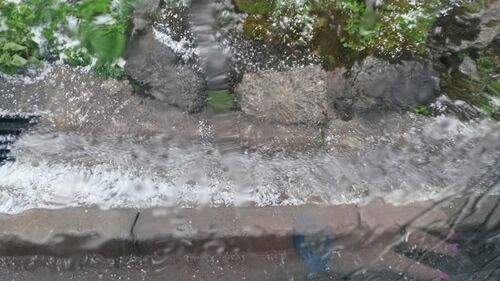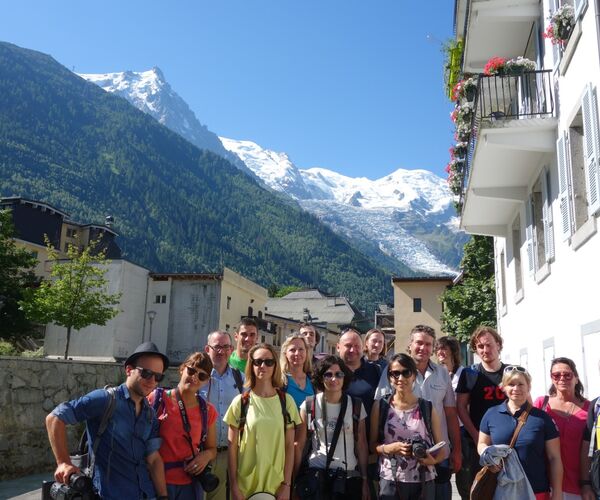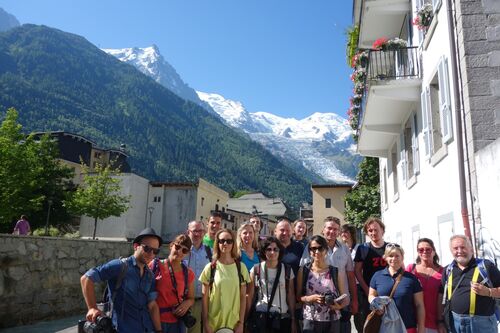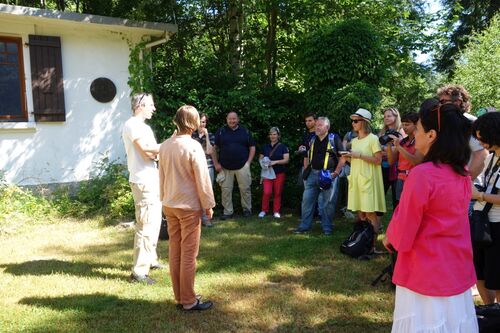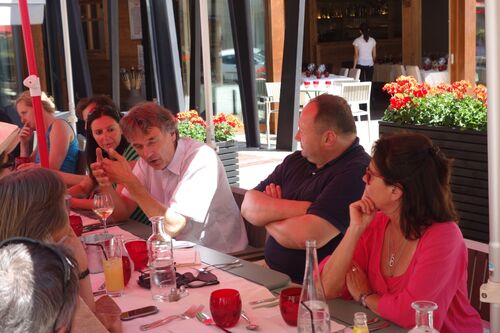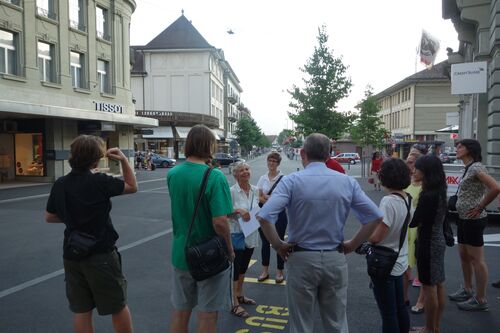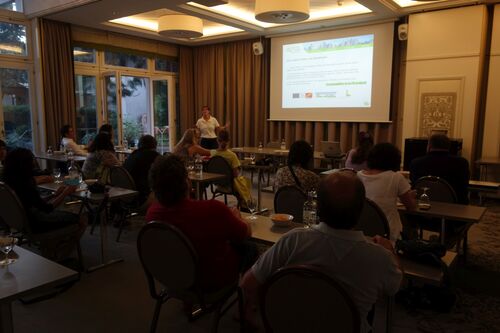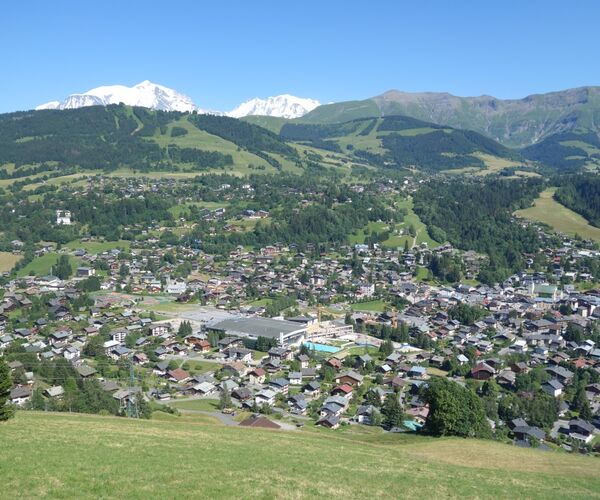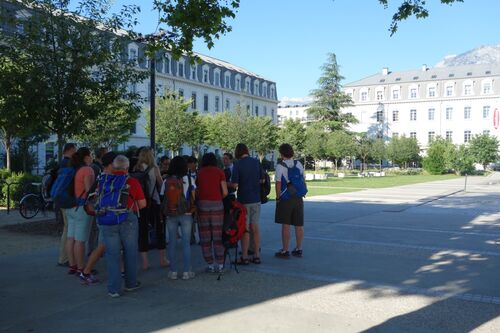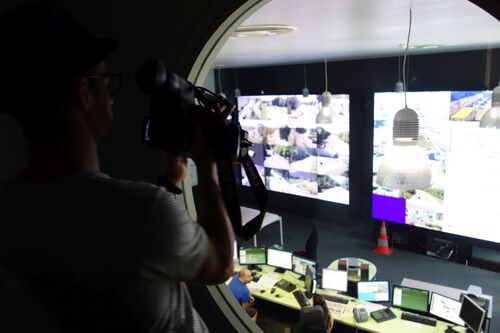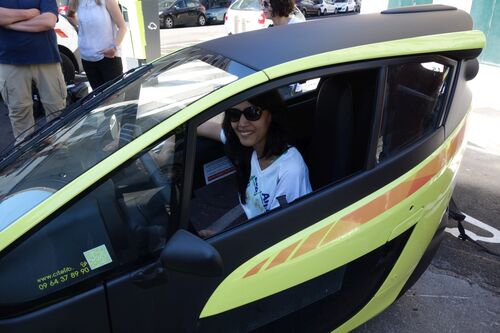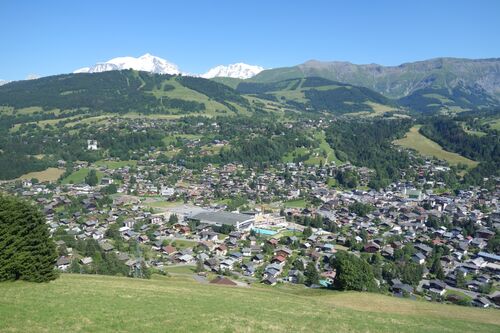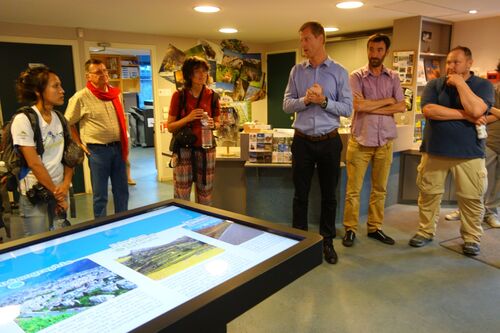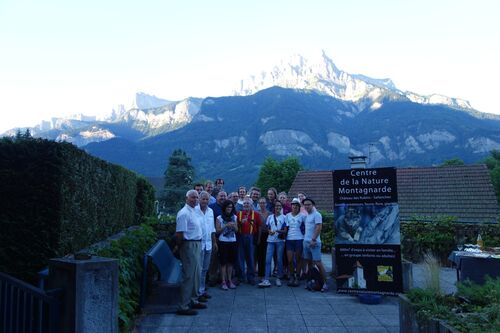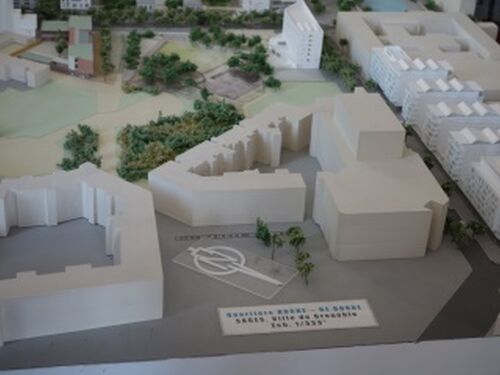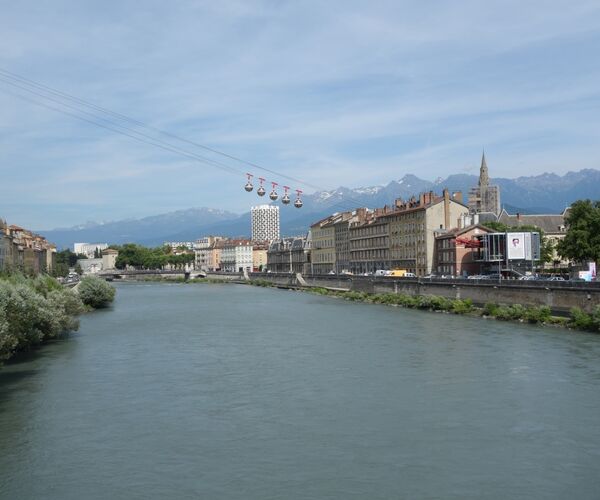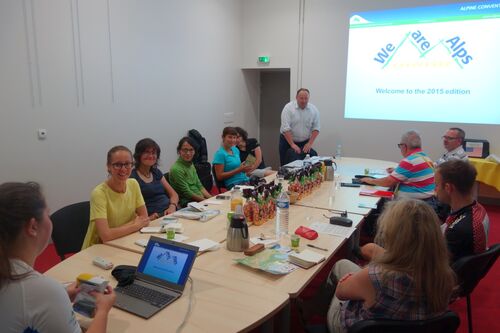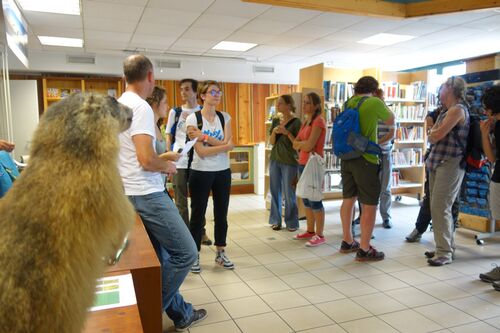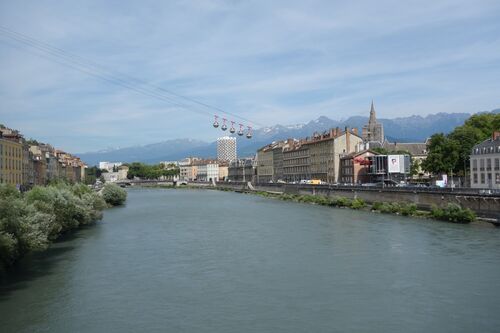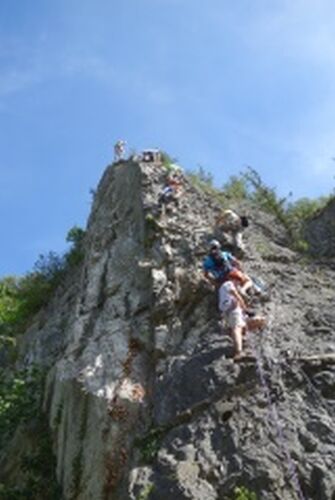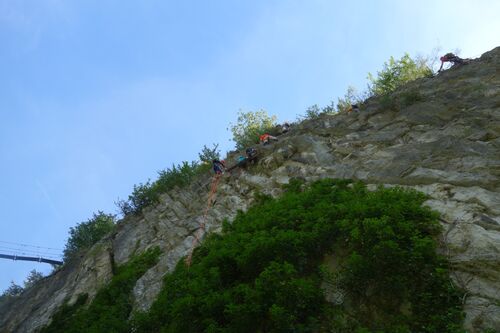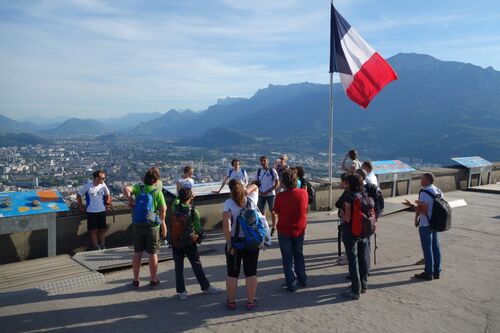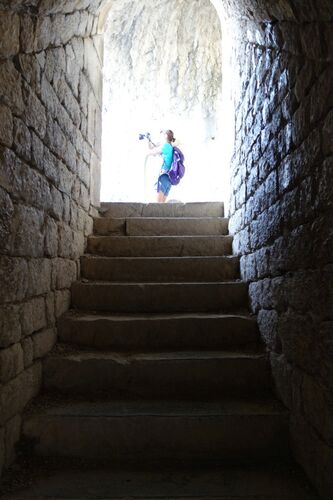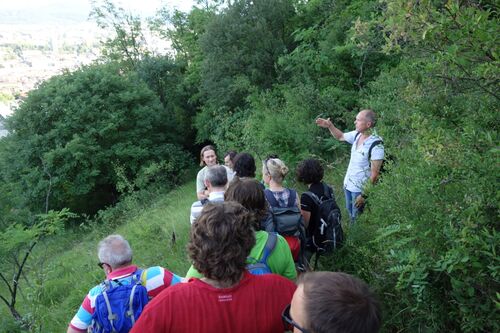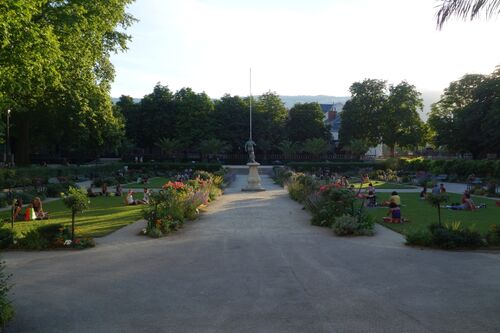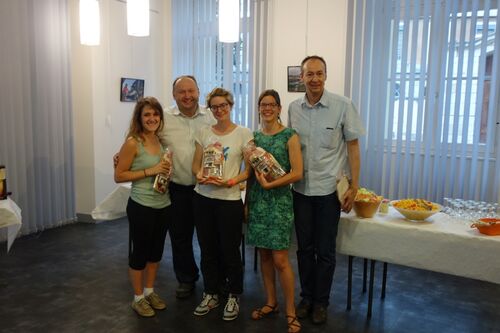We are Alps 2015
We are Alps Tour 2015 only exists in English:
Experience climate change close up
The tour showed the characteristics, features, opportunities and common issues the Alpine inhabitants are facing. This year’s focus was on the topic: Climate Change, especially considering the Climate change conference in one of the Alpine Countries (France) in December 2015.
The group of journalists was taken for a week long excursion across the Alpine arc, using sustainable means of transport, that are alternative to private car; trains, buses and bicycles were used, and a part of the tour was done on foot. Throughout the tour people from the Alps – amongst others experts, representatives of the civil society, different economic sectors and different administrative levels, business people, workers, farmers and politicians were met, therefore the name of the crossing: “We are Alps”.
The tour took place between 29 June and 6 July 2015 on a route between Grenoble (FR) and Zugspitze (DE). Activities on climate change observation, adaptation and mitigation were presented through Alpine and country specific approaches. Visit to and first-hand experience in projects on glacier monitoring, pedagogy on climate change, innovative mobility, energy efficiency, flood and natural risk prevention measures, changes in biodiversity, new approaches in agriculture and tourism were seen.
Blog
written by: Simonetta Radice
Climate change is the (hot!) topic of the “We are Alps Tour 2015” and it could not be more appropriate, considering that Grenoble, the city from where we started our tour, greeted us with a wonderful, hot day and a temperature of more than 30 degrees!
Grenoble is a beautiful city located in the Rhône-Alpes region, with a population of more than 157,000 and almost 665,000 if considering the whole metropolitan Area.
Surrounded by the French Alps, Grenoble is feed by mountain culture (the great Alpinist Lionel Terray was born here in 1921), and for the many people who love spending their time hiking, climbing, skiing, snowshoeing and so on there is a dedicated center: “La Maison de la Montagne”. “La Maison de la Montagne offers people all the information they need for outdoor activities related to mountains as well as the assistance of the “Bureau the guides”, based inside the center. A public library, a big mountain film festival and a specific activity addressed to young people are some of the projects “La Maison de la Montagne” is working on. Grenoble has also gained an international relevance as a scientific research center and for all the people coming from abroad, “La Maison de L’International” offers all the information foreign people need about the city and also raise awareness about European institutions, their role and the way they work. As foreign journalists, we have been greeted at “La Maison de L’International” too, and Markus Reiterer, the Secretary General of the Alpine Convention, gave us an overview about the aims and the way of working of the Alpine Convention itself.
Maybe not all the attending journalists expected something so challenging the first day of the tour, but right after the presentation we headed to the Via Ferrata “La pris de la Bastille”: how many cities can praise a urban Via Ferrata? It was not a picnic for us to reach the top but at the end all the journalists admitted it was a very special experience they will remember for a while!
La Bastille is actually a limestone rock 491 m high inside the city. At the top there is “Fort de la Bastille”, an impressive military structure built at the beginning of XIX Century and designed to repel an attack by the Duchy of Savoy coming over the Chartreuse Mountains. La Bastille features ramparts, blockhouses and steps, rising up almost 300 meters: today it hosts restaurants, museums and eventually it has become a big, outdoor gym for many city runners who are not scared by the 300 m of difference in altitude between the city and the top.
If you are not such an adventurer, you can anyway comfortably reach the top with a scenic cable car. The Grenoble cable car was built in 1934 and was the first one built within a city. The overview from the top is stunning, with a 360 degrees view on the city and the surrounding mountains, including Mont Blanc! Despite being a military fortress, la Bastille has also an unexpected, green heart: a botanical garden that is closed to the public but can be visited by groups of people with a guided tour. The garden is in facts a small area of wilderness, where nature makes its course: the most interesting thing is that, due to its particular exposition (SE), you can find here an ecosystem that is very similar to the Mediterranean ones: if you stay silent, you can hear the buzz of cigadas!
Coming back to the Maison de l’International, we met Pascal Clouaire, Proximité - Président(e) de la Ville and Lucille Lheureux Ville Durable - Président(e). They talked about the challenges of administrating a big city that is part of an alpine environment: how is it possible to bring nature in the city? How to make mobility in the city (more) sustainable? Hard to believe but the main issue Grenoble has to cope with is the high level of pollution, not only in terms of peaks, but mainly in terms of average values and the local administration is working to mitigate the problem.
Our visit in Grenoble is not concluded yet: keep on following us to know more about this enchanting city!
written by: Simonetta Radice
Grenoble is a city that keeps on amazing us. After visiting La Maison de la Montagne and La Maison de l’International, after having climbed the Via Ferrata and “conquered” La Bastille, we are now ready to know another jewel in the crown: the De Bonne eco-district which was awarded as the best national project in 2009, but the city of Grenoble had been working on it since 2003, with the aim of reducing electricity, heating, promoting resource efficiency, as well as improving community awareness. Starting the rehabilitation of former military barracks and covering an area of 8,5 ha, the district is an interesting mix of private houses, social houses, students’ accommodations, houses for elderly people and of course hotels, cinema, school and a shopping center as well.
These low energy constructions are made of sustainable materials and designed to naturally fit the urban area with adapted green patches, plus social sustainability and comfort for occupants.
Vincent de Tallandier (Tourism office of Grenoble) and Vincent Fristot (Vice-major in charge of urbanism, housing and energetic transition) are our guides during the tour of the neighbourhood and drive our attention on the high percentage of social houses the district includes (40% vs 20% established by law) in order to guarantee social diversity in the neighbourhood.
Each block of buildings has its own green area (for a total amount of 1,5 ha) and there are three major public parks in the district (3,5 ha). Rooftops of the buildings either host photovoltaic cells or are green roofs, that helps providing isolation and to lower urban air temperatures as well. The 200 people living here are also encouraged to adopt sustainable mobility through the use of bycicle or of the public transportation.
The Station Mobile en Grenoble is in charge of the management of the public transportation. They provide information on the different public transport networks, sell tickets for all the 5 cable car lines and 46 bus lines and monitor the every-day traffic situations. The agency also supports socially disadvantaged groups such as unemployed people offering them (because lack of mobility is often one major barrier to a new job).
One of the most interesting projects the agency is managing is about electric car sharing: a new zero-emission urban car-sharing service conducted in partnership with Toyota, the City of Grenoble, Cité lib and EDF. The project is working since June 2015 and will be conducted for the next a 3 years. It provides citizens with 70 ultra-compact urban electric vehicles designed specifically for "last mile" mobility needs. Toyota is providing 2 lines of vehicle: Toyota COMS (single-seater, 4 wheels, a small rear storage compartment) and the Toyota i-ROAD (two-seater, 3-wheel with Active Lean technology). A full recharge allows you to drive for about 45 km and the cost of the service for the people is of 1 euro per 15 minutes. These vehicles can be driven without a driving license but one hour and a half training is offered in order to fully understand how driving the car. The project also includes the presence of 30 charging stations provided by the partner EDF. Axel Debus is the Chef de project Cité Lib and made us test and drive this small cars: they are funny and performing good! The service is really brand new and at the moment (started in June 2015 and sees 600 subscribers of which 400 have received the training, but Mr Debus is confident for a quick growth of the demand.
We live now from Grenoble heading to Megeve in order to know their project that aims at promoting sustainable management of the water resource and improving the knowledge of the functioning of altitude hydro-systems. Here we meet Aude Soureillat (ASTERS - environmental association), Arnaud Brun (TENEVIA - company which offers innovative solutions to help monitor, forecast and manage water and environmental resources), Fabrice Estieu (Ski resort), and a representative of the municipality.
Even today it is very hot and in Megeve (1100 m altitude) we have more than 30 degrees: climate change is here to stay! The mountain village of Megeve is a very famous ski station with a ski area of more than 130 Km of slopes and 7 million skiers every year. The village counts about 4000 permanent residents who become 14.000 during the winter season. As many other mountain villages, it shows a high number of second houses that are closed for the most of the year and only 20% of them are main residences.
Almost all of the water resources come from surface waters (two main sources provide the village with a quantity of water of 500 m3 per hour) and is totally linked with the amount of precipitation (an average of 2000 mm per year) and temperatures. For this reason it is important to fully understand how to manage the available water in order to fulfill the needs of the community.
Basically a priority list has been drafted identifying the main water uses: Firefighting, drinking water, artificial snow and hydroelectricity. Ski is a very important part of the economy of the village and though Megeve is not very high (maximum elevation point is about 2500 mt ) it benefits of the Mont Blanc micro-climate with plenty of snow for most of the season. Anyway, the first and the last part of the season may require some help with artificial snow and, in order to provide it, 3 artificial basins has been created that can collect about 60.000 m3 of water each. The management of the water collection for artificial snow is subjected to strict regulations and they are trying to produce snow with less and less water.
When the village has abundance of water, they use it to produce electrical energy leveraging on three power plants in the area.
Normally 8% of water is enough to satisfy the needs of population but in periods of severe hydrological stress this percentage can be up to 70%! A series of cameras and meteo-stations collect data and images in order to have a clear picture of how the water situation is evolving. Models foresee an increase of rain fall for the next 50 / 100 years but a decrease in snowfall. Will mountain people have to rethink their economy in case of a severe scarcity of snow? This question will basically depend on how climate change will impact in the Alps.
In order to better understand how climate change is acting on the local environment we end up our day visiting le Centre de la Nature Montagnard in Sallanche. The centre was founded in 1985 and every ear is visited by more than 30.000 tourists. They have the ambitious aim to become the official visitors center for the Mont Blanc area and have in plan a huge renewal work to be completed by 2018. How the director Emmanuel Schaller explains, the center basically operates in 5 main areas that are environment, culture, education, tourism and international cooperation.
Education is a very important part of the activity of the museum as the idea is to help to residents young people the value and also the responsibility to be the inhabitants of a such valuable area. The centre hosts a big library and a permanent exhibition showing the geology of the alps, the evolution of glaciers, the fauna of the alps and the Mont Blanc area as a laboratory for climate change. They organize trekking for children in order to observe the nature but the activity of the center also focuses on local companies, naturalists, geologists and whoever is interested in a sustainable development of its activity in such a delicate environment.
The center also organizes a very important annual meeting "Les Rencontres Alpines" and guess what is the next topic on November 2015? Climate change of course! Our day ends up with a wonderful dinner with local products and the next city we will visit will be Chamonix: Mont Blanc, wait for us!
written by: Simonetta Radice
Ever wanted to be a scientist? Well, if this is your dream, in Chamonix you can make it come true, no matter if you are not a math genius or even if you do not have a degree... Want to know more? Let's start from the beginning. This is the third day of our we are Alps We are Alps Tour and we are leaving Sallanches heading to Chamonix. It's another stunning sunny day with a temperature of more than 30 degrees!
"Can't keep my eyes off you" says a line of very famous love song, but we think these words are also appropriate for the Mont Blanc, with its powerful shape and its amazing glaciers that seem to be so close... In fact they are! The Bossons Glacier, for instance, has the greatest altitudinal extent of all glaciers in the Alps with its highest point at the top of Mont Blanc (4807 ) and the lowest below the tree line (1400 m). Just last week a big avalanche caused the collapse of the front seracs and estimations say that a volume between 100 000 et 200 000 m3 detached from the glacier. Climate change is literally before our eyes and the Mont Blanc area is a favored observatory of the complex climate dynamics: in the Alps the 3% of the land hosts the 25% of all the living species and the temperature increase is twice faster than in the rest of the Northern Hemisphere (+1,2-1,5 vs 0,6-0,7).
It is not by chance then that Chamonix is home of L'Observatoire du Mont Blanc, a scientific lab that since the end of XIX century has been monitoring the evolution of the area. The Lab was founded in 1890 by Joseph Vallot, one of the pioneer of the scientific research in the Mont Blanc area has always been faithful to the mission of serving the science. Irène Alvarez (CREA), Anne Delestrade (CREA), and le botaniste Cristophe Landin are opening the doors of their house to us today to give us an overview of their activity in the area.
The Observatoire is basically working on 2 main projects: the first one is called Atlas and is aimed at collecting data in order to be able to make forecasts on the evolution of the different ecosystems in the area. Observations have been made for instance about the forest distribution, with an increase of 60% between 1952 and 2006 and a tree line established now around 2250 m and expected to move up to 2700 m in 2030 and 3500 m in 2050.
The second project is called Phénoclim and that's where your ambitions as scientists could be satisfied. Phénoclim is an educational and scientific project aimed at measuring the impact of climate change on plants and animal life. The project is based on collaboration and anyone who wants to be part of it will be in charge to manage specific monitoring activities (i.e recurring life phases such as the blooming of a specific tree). Data are then sent to the Observatoire and are processed as a basis to predict how the ecosystem will be evolving. Students, nature lovers, retired people, professionals: the project is open to anyone and is giving birth to a wise example of a network made of citizen-scientists, helping at the same time to raise the level of awareness about climate change and its issues. At the moment there are about 60 climate stations located in Alpes, Vosges, Jura, Pyrénées, Massif Central and Corse and more than 60.000 observations have been collected.
After this very inspiring presentation, we met Thierry Billet (President of the Alpine Town of the year association and Vice-Major of Annecy), and Elodie Bavuz (Municipal Councilor of Chamonix) in order to know more about Chamonix being awarded Alpine Town of the Year for 2015. This acknowledgment is awarded to an alpine town for its particular commitment to the implementation of the Alpine Convention, the protection of the alpine region and a sustainable, trend-setting development. Among the many actions implemented in Chamonix, we want to mention the free public transportation system, allowing citizens and tourists to move around the valley for free with the buses network and providing an answer to the issue of CO2 emissions caused by private car in the valley.
It's time to leave Chamonix now and by train we go to Interlaken, Switzerland! Interlaken is a town and municipality in the Interlaken-Oberhasli administrative district in the Swiss canton of Bern. The town is located on the Bödeli, between Lake Thun and Lake Brienz, and alongside the Aare river that flows between the two lakes. Tourism represents the most significant source of income and the city is today part of the Alpine Pearls network, an association including 27 tourism destinations in 6 Countries of the Alps offering carefree and conscious ways to enjoy holidays in an environmentally-friendly way. A special attention has been dedicated by Interlaken to public transportation, that is free in the whole area between the two lakes, both in the summer and in the winter, with direct connections with the most important European cities (i.e. Berlin, Paris) is available by train. The small city (about 5,600 inhabitants) is also facing a new challenge: a decrease of european tourism and the raise of new one coming from the Far East: Japan, India, Korea... a real multi cultural challenge! No need to say that many of the people who choose a stay in Interlaken do it because of the epic mountains surrounding the city: Jungfrau and Eiger. Guess what we are doing next? No, we are definitely not climbing the Eiger North Face, but we will be heading by train to Jungfraujoch observatory at 3,466 m. Forecasts say that it will be the hottest day ever on Jungfrau... good morning climate change!
written by: Simonetta Radice
You say the word "Eiger" and you immediately think about the greatest alpinists of all the times, from Andreas Hinterstoisser and Tony Kurts to Ueli Steck more recently. And let's not forget James Bond with the famous "On Her Majesty's Secret Service" movie, just located on the same mountains. Instead, not everyone knows that at the Junfraujoch a m scientific research center that has been working since 1931. We are at Day 4th of our travel and we are close to 30 C° in the morning, and we leave Interlaken by train in order to reach the so called Top of Europe, the highest spot in Europe you can reach by train.
Erwin Fluckinger, Director of the research stations International Foundation High Altitude Research Stations Jungfraujoch and Gornergrat and Markus Christian Leuenberger, Climate and Environmental Physics at Physics Institut, University of Bern, are our guides today and give us an overview of the history and the activity of the research station and the foundation. The Jungfrau railway construction was finalized in 1920 and its existence is closely related to the one of the research station, as basically the government authorized the railway provided that it will continuously support scientific research. The research station has been operating since 1931 and since then the railway and the scientists have been in close relations. Also the Gonergrat astronomical observatory is part of the HFSGJ Foundation and in Europe there are basically five high altitude research stations for a total number of 29 at global level.
Even if built for scientific reasons, today the Jungfraujoch is an important touristic destination with more than 800.000 tourists getting to the top every year (Compared to "only" 1,000 scientists!). Scientists getting to the station from all over Europe have been operating on many different programs and topics. Today, 80% of research is focussed on atmosphere and climate change with Swiss, Germany and UK managing about 78% of projects. Given its privileged location, the station is part of the GAW (Global Atmosphere Watch) of the World Metereological Organization and observations have been conducted since 1922, providing a big amount of precious data on the long term.
One of the most impressive data, for instance, is that since 1961 days with positive temperatures (24h) have been increased by 61%. For understanding and controlling the global warming processes a precise evaluation of the Earth Radiative Balance is necessary, i.e. the balance of the energy received by the sun from the Earth and the one reflected into space by the Earth. Supporting this aim, an in-depth study is being conducted about aerosols, small solid and liquid particles present in the atmosphere coming from natural and anthropogenic origin. Obviously, also programs of research in snow and ice have been conducted for more than 60 years and extension changes at the glacier's tongue has been monitored since the 1880's. After the visit of the station, we enjoy the stunning overview of the big mountains around, such as the Junfrau and the Mönch as well as of the huge Aletsch Glacier, covering more than 120 square km.
From the Jungfraujoch we take the train to Grindelwald and we admire the impressive Eiger North Face, a wonderful mountain in a very special Environment. We continue our travel by bus heading to Grimsel Pass.
The road to the Grimsel pass is a connection between the Bern Alps and the Upper Wallis and the area is the first one in Switzerland where Rockslides, landslides and erosion have been directly connected to climate change. The road has a strategic importance and since 2009 a series of debris flow events have put into danger both the road and the community that are based along it. Specifically, in 2009 a huge rock fall from the top of Ritzlihorn caused by the melting of permafrost brought to a landslide of 100.000 m3 of debris that interrupted the road and raised the river by more than 20 meters. A gallery was built in order to restore the passage but other debris flows in the following years put it in danger and a huge work of reinforcement has been done.
Now all the area is being constantly monitored to prevent similar events. In fact, an assessment study made by a panel of scientists and geologists has been conducted in order to identify the most dangerous spots. Markus Wyss (District Chief Engineer for the Canton of Bern) tells us that after a first evaluation of the most risky areas, 7 new natural hazard zones had been identified and at each location an adequate monitoring system has been established. Though these areas include small inhabited communities, they have also been identified as no-construction areas and further investments, also on the existing buildings, have been forbidden, except for ordinary maintenance. In order to find a solution that could also be acceptable for the community, a probabilistic study has put in place, aimed at calculating risks on an average time of 25 years, about the time requested to amortize a house investment.
This probabilistic and medium-term approach allowed to rehabilitate some areas that in a first step had been evaluated as maximum risk ones and for the Guttannen community it is a chance to raise their level of awareness about the land they are living in and to make alternative plans in case of a significant, negative development. Our travel end up for the day just after Grimsel Pass, under a huge hailstorm that gave us a perfect example of how much you never have to underestimate the power of nature...
written by: Simonetta Radice
It's the smallest Country of the Alps and the 6th smallest State in the world with a surface of 160.000 Km2 and 37,370 inhabitants living in 11 municipalities. This special place has the particularity to have about the same number of jobs as of population... Guess where we are? Welcome to Liechtenstein for day 5 of our We Are Alps tour!
We arrive at the capital city Vaduz in the morning by train, where the Environment Office of Liechtenstein and the national energy provider LKW invited us to visit two small facilities aimed at producing energy from renewable sources. In the neighbourhood of Balzers we visit then a small hydroelectric plant that uses drinkable water to produce energy. After the water has been processed through the turbine, it is available for people to be drunk without the quality being compromised. The plant produces now 30.000 Km/h per years serving 5/6 houses, but its capacity can be powered up to serve up to 85 houses.
In Liechtenstein 41% of the country’s surface area is forest and the forestation level is balanced, so the wood heating plant of Balzers has no high impact on the quality of the environment. The plant produces hot water for the needs of about 40 houses and a laundry that is located very close to the facility. The fact that transportation costs can be lowered basically to zero as the wood comes from less than 10 kilometres distance increases the productivity of the plant.
Liechtenstein has the particularity to have about the same number of jobs than of population, so that about 50% of the people working here are commuters, coming every day from Austria and Switzerland and to some extent from Germany. Liechtenstein is a country of car lovers as well with more registered vehicles than inhabitants!
In order to mitigate the high level of traffic the city of Schaan was experiencing every day during rush hour, a sustainable mobility plan has been promoted by CIPRA International together with a number of partners, in the framework of the AlpStar project. The AlpStar project was aimed at raising awareness of a more environmental friendly attitude towards mobility in the society and involved politicians at local, regional and national level (in the case of Liechtenstein), decision makers in the regional transport networks, NGOs, enterprises and commuters themselves.
Mobility managers had an important role in this project as they helped to promote the mobility inside their companies with specific actions to make sustainable transportation (buses, trains, bikes) more appealing for people.
Hilti is world market leader for professional fastening and demolition technology, has its headquarters in Schann and employs 22.000 employees all over the world. The facility of Schaan, where a new innovation center has been opened recently, hosts about 1700 employees: only 20% of them are living in the Country, while all the others commute a medium short distance (most of them below 16 km). We met the Mobility manager of the company Daniel Oehry who explained us how he is working to promote sustainable mobility within Hilti.
The project firstly concentrated on creating awareness about the problem and on the many benefits a different approach to mobility could bring to people: "One thing we experienced" says Daniel Oehry "is that people relate to climate change in different ways." In other words, in order to create awareness and make sustainable transportation appealing for people, the company leveraged mainly on the benefits they could get in terms of money saved and healthy habits achieved. All employees were involved in the new mobility plan of the company. 95 ideas were developed and they focused on 10 important areas.The company worked at different levels: as far as the internal communication is concerned, mails were sent to all employees making them aware about their mobility and a dedicated Intranet page has been created and Hilti employees shared experience with n testimonials.
The company worked on infrastructures (parking for bikes, new changing rooms) and provided bicycles for employees. A bicycle competition with a final ruffle was organized in order to award people traveling the longest distance. A series of events has then been created such as the Bicycle-to-work day and the public transportation event. As results of the Alpstarproject, a digital bike map for commuters has been set up as well as a bike navigation system.
At the moment, the number of people going to work with sustainable means is up to 13% (vs 9% in 2012) and the goal is to have 20% of people by 2020.
What the company has chosen to do is working on people mind change, a long-term process that can require time and engagement, but that can bring the best results once achieved!
written by: Simonetta Radice
In 1954 the words "climate change" were probably on nobody's mind yet, but it may already have been acting.
Blons is a small, rural village located in the alpine Vorarlberg region (Austria), and in 1954 was experiencing an extraordinary, warm winter with blooming flowers, high temperatures and total lack of snow. These exceptional conditions lasted until January 9th, when all at once it started to snow and went on for three days in a row. On January 11th seven avalanches in a day collapsed on the small village killing 80 people and basically destroying the entire community.
Not really a light heartened story to start our 6th day of the We Are Alps tour, but this traumatic event had a big impact on the life of the entire valley and even nowadays influences decision makers in their choices in terms of environment protection. Today we are in fact in the "Grosses Walsertal", a mountain valley with approximately 3,400 inhabitants, spread on the six municipalities - Fontanella/Faschina, St. Gerold, Raggal/Marul, Sonntag/Buchboden, Thüringerberg and Blons. Specifically we are visiting the Biosphere Reserve, part of the UNESCO Bioshpere Reserve and aimed at exploring the relationship between man and nature, promoting sustainable development and protecting the environment at the same time. We are welcomed by Christine Klenovek, Bioshpere Park manager, and Toni Zech, who will show us how climate change is changing the forest distribution and which actions are being taken in order to mitigate risks.
Winters bring plenty of snow in the valley, with peaks beyond 5 meters, on very steep slopes. After the 1954 disaster, slopes have been populated both with avalanche walls, and with spruces and first.
"We want to be the forest doing 90% of the job" says Zech "And we prefer investing on prevention than having to face disasters". The wood is strictly monitored and every cut has to be accurately evaluated. Climate change is having a visible impact on woods, as leaved trees tend to grow at higher elevation but this is a limited concern: "We work to have the ecosystem as balanced as possible, but you cannot have a total control on what nature does".
For the whole Vorarlberg area, winter tourism is more productive than the summer one. Kerstin Biedermann-Smith (Project KlimTourV) explained us the results of a project that has been conducted between April 2013 and May 2014 and aimed at evaluating the impact of climate change on the main activities in the valley: tourism, agriculture etc. The Average temperature increase in the next 35 years will be consistent with what we are registering in a the Alps today (+1,2 C), but the number of days with temperature below zero will decrease by 20%, while days with more than 30 C Will increase by 300% (we are experiencing a week of them, apparently!). Out of 18 ski stations in the area, it will be likely that nine could experience a total lack of snow by 2050 and alternative to the traditional winter sports will have to be taken into considerations and the way this challenge will be addressed will be crucial for the future of the Alps.
Before leaving Saint Gerard we visit the multi-functional center of the small village which hosts kindergarten and the community service offices. The building is a wooden passive house that was completed in June 2009; the hosted services are essential for the small community, counting only 350 people and the region administration decided to invest on sustainable development so that people could keep on living in the valley.
Something special is waiting for us in Buchboden: we will have some time to relax at the local hot springs… but not before having experienced a plunge in the river Autsch: literally so cool!
Our intense day is not over yet: we are now ready for dinner that will be cooked using local herbs for a very special menu. Herbs picking has a tradition in the valley: a community of local and passionate women pick them in order to make a very good herbal tea, that is also sold in a prestigious coffee shops in Vienna!
Summarizing: hot springs, herbal tea, ad hoc menu, sustainable development…where we are exactly? For sure we are living in a "mountaineering village"!
The “mountaineering villages“ initiative originated from the Austrian Alpine Association together with the Federal Ministry for Agriculture and Forestry, Environment and Water Management and it is aimed a promoting a different kind of tourism in the alps, far from the big center and focusing on sustainable development in compliance with legal regulations, including the protocols of the Alpine Convention. The project helps the smallest communities to value their heritage in terms of landscape, traditions and culture, helping to maintain infrastructure within communities as well. The idea is to promote soft tourism all over the year, leveraging on the natural beauties mountain is able to offer and not depending mainly on the winter snow that seems to have an uncertain future. The project is growing and doing well… slow and steady wins the race!
written by: Simonetta Radice
Can climate change affect train transportation? It can! We had an ultimate proof yesterday when we had to take a bus on our way to Garmisch, as the train connection was interrupted because of the high temperature that widened the rails, preventing the train to continue its travel. No need to say that even yesterday was a very hot day, with temperature higher than 30 C at an elevation of 1400 m!
Our day started in Sonntag where we took the bus to reach the starting point of our hike to Bad. Public transportation in Vorarlberg allows you to travel and hike through the valley in a very convenient way as connections between are perfectly optimized and you can go hiking from your hotel completely leveraging on the bus system.
We start our hike crossing an area that used to be a pasture, now no more used. Biodiversity is very rich here, with many different species of flowers and insects, while trees are slowly regaining their space. The area is fully populated with marmots representing an example of a species taking advantage from climate change: longer summer and shorter winters allow them to protract their summer period, when they feed themselves intensively in order to survive the winter. Marmots are healthier in these years and they proliferate in the area.
The land we are crossing shows also evident signs of erosion and the trail itself needed to be restored in many tracts in order to be preserved. In about three hours we arrive in Bad, to continue our travel by bus and train to Sonthofen, Germany.
Sonthofen is a town in the county (Landkreis) of Oberallgäu (Bavaria) with a surface of 46.60 km², ranging from 730 to 1,050 meters in altitude. It is the most southerly town of Germany, between the rivers Iller and Ostrach. It counts around 21,000 inhabitants.
We are in Sonthofen in order to visit a big wetland area that in the past used to be a pasture but, as farms were too far, it was never fertilized and eventually abandoned. Today the area is an example of biodiversity with many species of rare plants and insects and has been restored through a project initiated in 2012 that got a financial support from the Land Bavaria which has a comprehensive program towards wetlands renaturation in link with a climate program. Ingrid Fischer, Vice Mayor of Sonthofen greets us and we start our tour of the wetlands.
Why are wetlands so important in the climate change frame? For sure for their capacity to catch CO2. Do you know that one hectare of 5 meters wide wetland has the same climate function as a 50 hectares forest? Monitoring of these areas is very important, as they can be a precious indicator of how climate is evolving. The Strausbergmoos area covers 70 hectares, so about 100 football fields and is the first renaturation project in a high alpine area in Bavaria. Here wetlands about 185,000 Mio Tons CO2 are caught and the renaturation measures have a yearly positive impact of about 25,000 Mio Tons.
Steffi Kuisle, Tabea Tandler, Maren Kleinschroth are Students from the Gymnasium in Sonthofen and they are part of The Youth Parliament to the Alpine Convention (YPAC), founded by Akademisches Gymnasium Innsbruck and the Alpine Convention in 2006. The project aims at bringing together young people from different regions to discuss current topics regarding the Alpine region in a parliamentary simulation. The project involves schools from Italy, Slovenia, Germany, Liechtenstein, Switzerland and France and is an opportunity for young people to be aware of the most relevant topics related to the environment they live in. In 2015 the students were discussing the topic of Ecosystem services in times of Climate Change. They came up with 10 resolutions that they will be presenting to their local and national politicians in order to point out their view on the issues and their solutions.Sonthofen in 2005 was awarded Alpine town of the year and in 2009 it was awarded “Fairtrade town” and it is famous for its milk and cheese product. Our day could not conclude with a good Bavarian beer and a taste of local products!
Time to go to Garmisch: the tour is almost concluded and tomorrow we will be on the top of the Zugspitze!
written by: Simonetta Radice
It's the last day of our We Are Alps Tour and the words "last but not least" could not be more appropriate to describe our day! We leave Garmisch heading to the top of the highest mountain of Germany: the Zugspitze (2962m), located in the Wetterstein Mountains and very close to the Austrian border. No challenging activities are in plan for us today: we will reach the top of the mountain with a connection of trains and cable cars, as we have to attend an important meeting: Barbara Hendricks, Federal Minister for the Environment, Nature Conservation, Building and Nuclear Safety and Ulrike Scharf, Bavarian Minister of State for the Environment and Consumer Protection, will join us on the last day of our trip.
Germany is holding the Alpine Convention Presidency for the current and the next year and the ministers wanted to highlight the commitment of the Country for climate action. "The German government's Climate Action Programme 2020 shows that we are serious about combating climate change." said Barbara Hendricks "A few days ago, we also launched the broad-based dialogue process for the Climate Action Plan 2050. This plan will plot the course towards decarbonising our economy and drastically reducing our overall greenhouse gas emissions." said the minister.
With the 2015 United Nations Climate Change Conference taking place in Paris in December, Barbara Hendricks showed to have a clear vision about the achievements she wants to get: "A comprehensive and binding climate agreement where all Parties should set themselves binding climate targets. A successful outcome would also include sending a clear signal of solidarity and support to the world's poorest countries which are most affected by the impacts of climate change."
The Zugspitze has a specific importance for the climate change research: close to its top the Environmental Research Station Schneefernerhaus is located that is managed by the Bavarian State Ministry of the Environment as a facility for altitude and climate research that unites ten leading German research institutes. This research station has an interesting history as it was conceived originally as a hotel in 1931. On May 15th 1965 a huge avalanche collapsing from the steep slopes above the hotel hit the building: 10 tourists were killed and more than 80 injured. The avalanche marked the beginning of the decline of the hotel and, starting from the 80's, the improvements of the ski area with new and modern cable cars that made the area more easily accessible, brought the hotel to close down because of a lack of clients.
Following the 1992 Rio Earth Summit the hotel was eventually modified to become a research station.
The official opening was celebrated on May 12th 1999, after about 8 mio Euro had been spent.
During our tour of the station scientists gave an overview of their work and we could learn how complex the study of climate is, for the variety of elements that are involved in it. Key scientific activities at the institute include Satellite-based observations and early detection, regional climate and atmosphere, cosmic radiation and radioactivity, Hydrology, Environmental and high-altitude medicine, GAW (Global atmosphere Watch, biosphere and geosphere and cloud dynamics. More specifically, the Global Atmosphere Watch (GAW) is a global network organized to measure the state of the atmosphere and to detect physical and chemical changes in it. The program of the Federal Environment agency focuses on climate forcing gases, reacting gases and aerosols and the acquired data can be essential for the detection of changes, modelling and ground thrusting.
It was a truly inspiring day, and the same we could say about the whole tour through the Alps. Having the chance to meet people living in the mountains, talking about the challenges they have to face in their every-day life, and learning about the projects they are putting into action in order to cope with climate change provided us with precious insights and made us even more aware of how much important it is for everybody’s life to preserve and save the fragile ecosystem of the Alps.
Partners
Photogallery
Participants
written by Georg Bayerle:
- Eissturz am Bossons-Gletscher at Bayern 1
written by Oscar del Barba:
- La seconda edizione di WE ARE ALPS è partita da Grenoble in "Lo Scarpone"
- Grenoble, Megéve, Sallanches, Chamonix, Interlaken, Jungfrau,Oberwald: continua il cammino di We are Alps dalla Francia alla Svizzera per valutare gli effetti dei cambiamenti climatici nelle Alpi in "Lo Scarponw"
- “We Are Alps” si è concluso lunedì 6 luglio in cima allo Zugspitze in "Lo Scarpone"
written by Raul Cazan:
- Alpine plants affected by temperature rise on 2celsius.net
- On Citizens’ Science with Cristophe Randin on 2celsius.net
- Europe’s Fitness Test against Nature on 2celsius.net
- Testul de competenţă europeană împotriva naturii on bloguri
- Telemea cu Barilla on bloguri
written by Axel Klemmer:
- Schon warm, Folgen des Klimawandels in den Alpen in Bergsteiger
- Achtung, heiß und brüchig in DAV Panorama
written by Nicolai Morawitz:
written by Maja Prijatelj Videmšek:
- Alpe - laboratorij dobrih praks zelenega gospodarstva on Delo.si
- Vrh Evrope in Delo
- Zeleni vrh Evrope? Morda že konec stoletja in Delo.si
written by Simonetta Radice:
- We Are Alps #1: un viaggio nel cambiamento climatico on Planetmountain.com
- We Are Alps #2: un viaggio nel cambiamento climatico on Planetmountain.com
written by Martin Waldhausen:
- Klimawandel hautnah for the German federal Ministry for the Environment
written by Veronica Ulivieri:
- Mobilità: spostarsi in modo sostenibile è possibile anche sulle Alpi on EcoNews
- La Grosses Walsertal, non solo un paradiso per gli sport invernali in La stampa
- Alpi: monitorare clima e piante con la Citizen science in Corriere della sera
written by Romano Venziani:
- Tropico alpino on RSI
List of news and articles published about the tour by local media
- Radio Mont-Blanc: Chamonix: La convention Alpine réunie
- Le Dauphiné Libéré: “We are Alps” : des journalistes invités à réfléchir sur le changement climatique
- Wirtschafts Woche: Ferner Schnee an der ZugspitzeHendricks auf den Spuren des Klimawandels
- Br.de: Auf den Spuren des Klimawandels Zugspitze ohne Schnee?
- Merkur.de: Am Gipfel Klimawandel pur So kämpfen Forscher um den Zugspitz-Gletscher
- Cipra Newsletter: Klimawandel live!
- Die Welt: Hendricks inspiziert den Gipfel des Klimawandels
- Volksblatt: Informationsanlass der CIPRA Verkehrsprobleme von Kleinstaaten im Fokus
- BO: Interlaken gehört zu den alpinen Perlen
- Jungfrau Zeitung: Vom Tourbussen und Nahhaltigkeit
- CBCTV: Auf den Spuren des Klimawandels
- CBCTV: Auf den Spuren des Klimawandels -2-
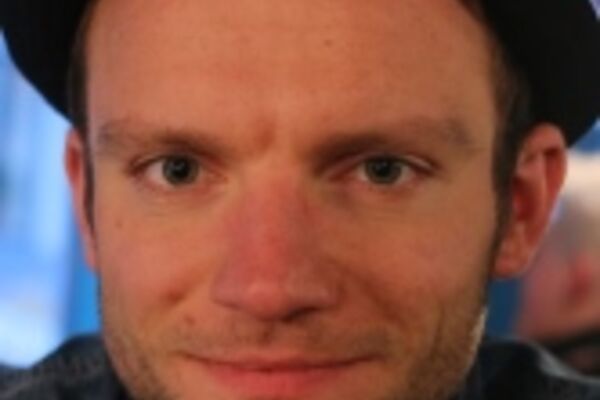
Nicolai Morawitz
I am currently working as a correspondent for the Swiss News Agency (sda/ats) in Ticino (Switzerland).My job is to cover all major events in the Italian speaking part of Switzerland and to write articles for Swiss German newspapers.The Alps are distinct natural borders for my daily work as a journalist. In the north, the Gotthard not only separates the Italian speaking part of Switzerland from the German speaking part, but is also a border line between the Mediterranean sphere and the Northern climate zone.I am interested in video journalism and data journalism projects. Cross cultural projects between France, Italy and Switzerland are one of my field of interests.

Axel Klemmer
Axel Klemmer was born 1963 in Berlin, moved to Munich in 1968 and has been travelling and climbing in the Alps since that time. He studied Geography and concentrated on the economical and social aspects of alpine tourism. For more than 20 years he has been working as an editor and (free lance) journalist for print and TV, he is also writing and editing travel and hiking guides. Some time ago he changed the focus of his work. That means he cut down on working for special interest Alpine magazines and PR agencies. In spring 2014 he managed a panel discussion about the European Strategy for the Alps EUSALP in the Alpine Museum in Munich and wrote an essay about this topic for the Alpine Club's annual 2015. Being an Geographer he is interested in alpine landscapes and all kind of spatial patterns that human action leaves on the ground.
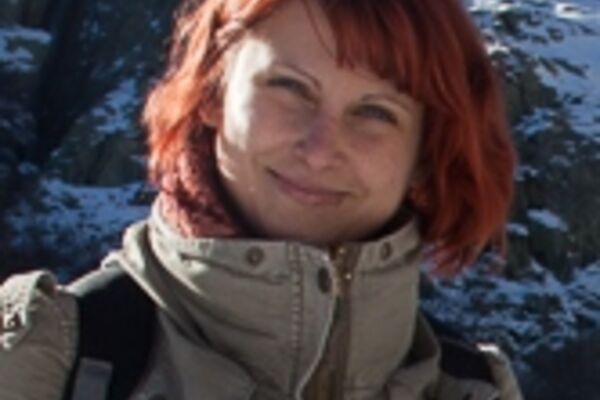
Sarah Ennemoser
Sarah Ennemoser, 26 years old, can’t live without mountains and different languages. As a video reporter, she covers all kinds of local news for France Télévisions, the french public TV channel. She is also a freelance journalist, photographer and translator. Currently she lives in Strasbourg, but in reality she’s always on the road with her backpack and a camera on her shoulders. Sarah’s origins are in a small village in South Tyrol, in the heart of the Italian Alps and the Val Venosta apple plantations. After school she lived in Brussels for four years. In the « plat pays », the country of Jacques Brel, she missed the mountains so much that she moved to Freiburg in the Black Forest and to Strasbourg, where she finished her master in German-French journalism in 2014. European and environmental issues are definitely one of her favorite ones. She loves nature, sports, photography and she is looking forward to do some diving lessons in Corsica. At the bottom of the Mediterranean sea or on the top of the Alps, one of Sarah’s passions is to discover very different types of environments, ecosystems and people.

Raul Cazan
For more than five years, Raul is communicating EU’s policies in biodiversity and climate change as Editor-in-Chief of the environmental portal, 2Celsius Network, a product among few of this kind in Central and Eastern Europe. Currently he is collaborating with the Brussels based European Journalism on issues related to climate change. He is reporting for different media in Central and Eastern Europe. Raul holds two Master’s Degrees in social sciences from the prestigious Central European University Budapest and University of Trento, Italy, encompassing research in environmental communication and media studies. He is also a constant collaborator of the World Wildlife Fund, Transport & Environment, and other pan-European groups. For a few years he acted as an environmental consultant in Brussels and recently co-authored a book on ecological connectivity in the EU.
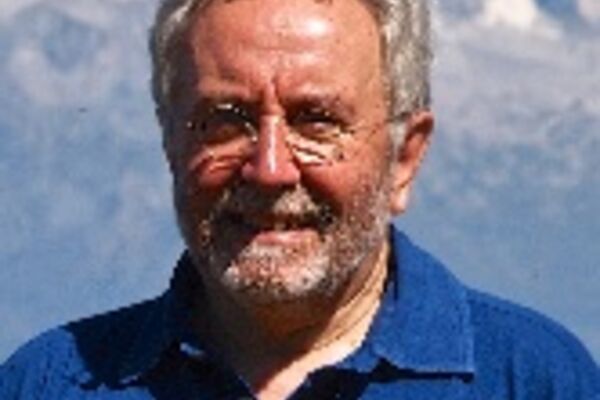
Oscar del Barba
Oscar del Barba, architect and urban planner (born in Lecco in 1950) lives in Morbegno. He’s member of CAI - Italian Alpine Club since 1967 where he is in charge of the Technical Secretariat for the Environment. He was the director of the Parco delle Orobie Valtellinesi 1998-2000. From 1980 to 1998 he was director in the Lombardy Region, where he mainly worked in the environmental sector and has directed and produced numerous projects, including the relocation of refinery Agip in Rho-Pero, on whose grounds stands the Nuova Fiera di Milano. He had completed the first regional plan for the waters of the Lombardy Region and initiated the construction of the waste water treatment system of Milan in 1996. He also created and directed a lot of projects funded by the EU and applied bioremediation techniques in agricultural areas polluted. From 1992 to 1998 he was a member of the Technical Committee of the Po River Basin Authority; from March 2008 to January 2014 Oscar del Barba was the President of CIPRA Italy. He was also a member of the National Council of the Environment of the Ministry of Environment, Land and Sea. He is following the activities of the Alpine Convention since 1994 and participates in the Italian delegation to the Permanent Committee during since 2013. In 2014, he promoted in the City of Morbegno the Info-point of the Alpine Convention. He loves hiking, cycling and is also a passionate sommelier.
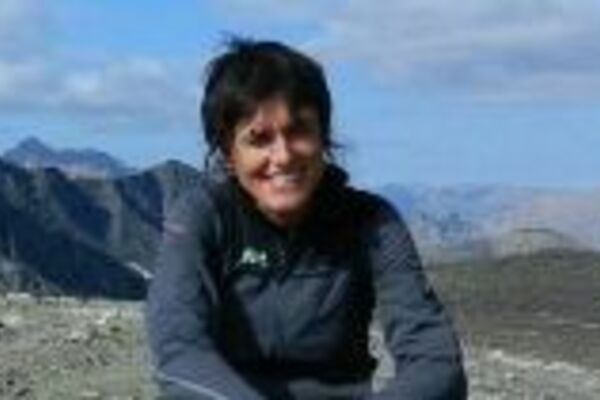
Simonetta Radice
Free lance journalist and contributor for PlanetMountain.com, and Altitudini.it. Mountain blogger, content and community manager, I am also working for the Banff Mountain Film festival World Tour in Italy. Born in Milan in 1971, I spend my time between the big city and the lake Maggiore, where my real home and my heart are. I love mountains in every season: hiking, skiing, travelling and spending time in the nature are the things that makes me happy. Interested in everything concerning life in the mountains: ecology, economics, anthropology, traditions and so on. You can find me on my blog.

Christine Brugger
Christine Brugger is CEO and editor of Radio Osttirol in Lienz, Tirol. She started her career in radio business right after the liberalisation of the Austrian Broadcast in 1998 at Radio Frequenns (grass root media) in the Ennstal. She took over the principles of plurality of opinion from then to the day-to-day programme of Radio Osttirol. Her motivation to make radio programme is both curiosity and passion. Radio Osttirol is located in Osttirol with its Nationalpark Hohe Tauern and the river Isel. Therefore she reports about topics such as protection of nature and environment, Natura 2000 and hydropower plant projects because of their importance within the transmission area. These topics get more editorial attention as you would assume in the programme of a local radio station. Radio Osttirol has been nominated as „Best News Broadcast“ at the 1. Austrian Radio Award 2015 with the „Mittagsmagazin“ , a daily magazine with news and reports from our transmission area at noon.Beyond that Christine Brugger, who studied horticulture, works as a presenter at events and trainer in media education.
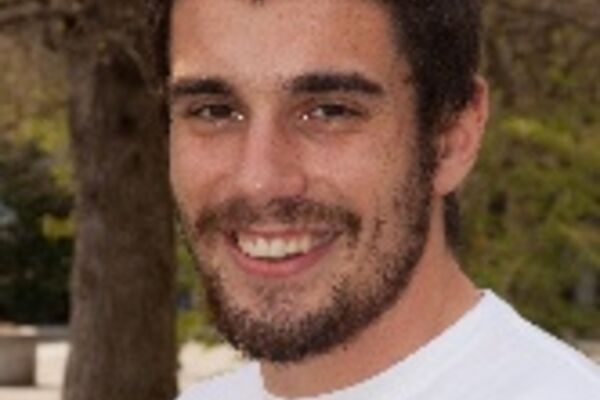
Filippo Marinoni
26 years old, employee at Associazione Ars.Uni.VCO. Responsible for the first Alpine Convention’s Infopoint set in Domodossola. He participated in the previous edition of WE ARE ALPS. He partook in the New Generations for the Alps project, sponsored by the Italian Presidency of the Alpine Convention. He is interested in the whole aspects of mountain’s life: ecology, economy, customs, sports and many other aspects, including communication.
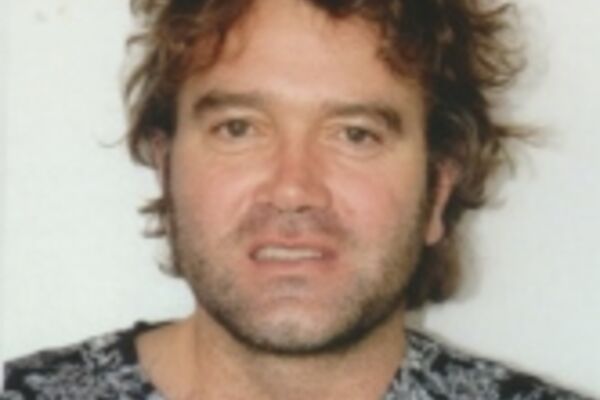
Georg Bayerle
Dr. Georg Bayerle, born in Günzburg, Bavaria. Specialist for Mountains and Environment in Radio and television of Bayerischer Rundfunk. Studies in München and Wien, phd in Literature at the University of Köln. Since the age of 5 connected to the mountains and continuously on tour all around the year. His reports are broadcasted in Shows like "Rucksackradio", „Bergauf Bergab“ und „Zwischen Spessart und Karwendel“. About mountains, alpine culture and nature he published more than 100 films and numerous radio reports. Many of the emissions show the transformation of alpine nature caused by economic impacts as well as climate change. The reports observe the changes in the relations of Humans, mountains and civilization as well as remarkable incidents of the alpine cultural history.

Maja Prijatelj Videmšek
My name is Maja Prijatelj Videmšek and I'm a journalist from main Slovenian newspaper Delo. I cover wide area of topics ranging from social issues, food and health to environment and ecology. I was the initiator of weekly page in Delo about environmental topics and also write for it. Privately I'm a big nature and animal lover and enthusiastic gardener.

Veronica Ulivieri
Veronica is a freelance journalist and contributor for many Italian newspapers (La Stampa, Repubblica Affari&Finanza, Il Fatto quotidiano, Inform-ant.com, Econewsweb.it, Eticanews.it). She usually covers environmental and economic stories, with particular attention to European policies. In the past she also collaborated with the scientific organization EvK2Cnr, during their international conference on mountain and climate change (Lecco, Italy, 2013). She was born and raised in Tuscany near the sea, but she loves the Alps. In 2015 she was awarded by Ugis, the Italian Union of Scientific Journalists, for her commitment to scientific communication.
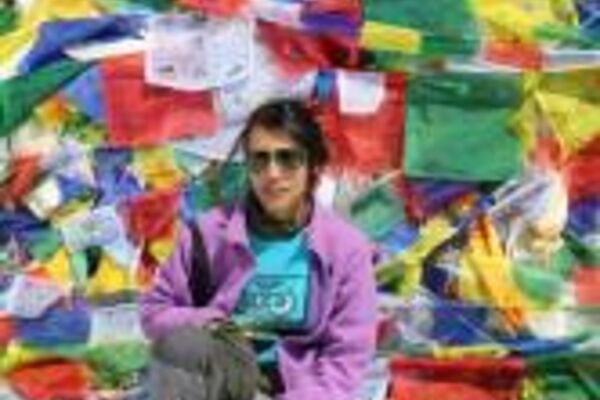
Pragati Shahi
Pragati Shahi is Sub-Editor with The Kathmandu Post, an English national daily published from Kathmandu, Nepal. As an environment and development journalist for more than six years now, she has widely reported on several issues relevant to environmental sustainability, mountain ecosystem, natural disasters and food security, etc. She has also reported on global environmental problems including global warming and climate change and represented her country as a media representative and a young changemaker to climate change negotiations held in Copenhagen and Warsaw. Her paper on regional environmental issues focusing on early warning system to minimise the risks of glacial lake outbursts floods is published by Centre for South Asian Studies (CSAS) Konrad Adenauer Stiftung (KAS), Germany in 2012. Born and raised in Nepal, the country bestowed with world’s highest mountain ranges and green lush forests, she is an avid traveler and enjoys trekking through the mountains where she is able to connect with the people to learn about their culture and tradition. She is a passionate photographer and has affinity towards wildlife and landscape photography.
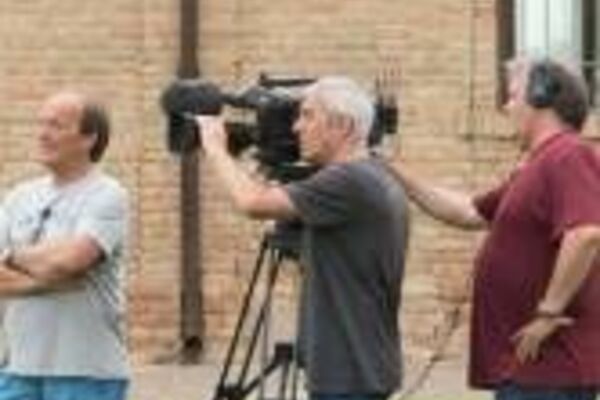
Romano Venziani
I was born in 1954, in Ticino (South part of Switzerland), where I still live.In 1982 I obtained a Licence ès lettres at the University of Geneva (modern history and history of international relationships).Since 1983, I work as journalist and producer at RSI (Italian speaking Swiss Radio and Television), and deal with issues related to territory, culture, history, traditions, a sort of "anthropological incursion" into the Swiss reality. I produced documentaries on humanitarian projects (Madagascar, Cameroon, Sao Tomé, Cambodia, Ethiopia, Ecuador ...). With the cameraman Luciano Paltenghi, I made several documentaries, including: Caro fratello ti scrivo…; Il canto del mare; La saga dei Durini; Il bosco delle memoria; Cime contese; In viaggio con Daisy. As the passion for the mountains imprints my work, I often produce documentaries on alpine trekkings. For years and still nowadays, I’m the producer of a weekly broadcast on RSI, Svizzera e dintorni. In 2007 I got the Premio Lombardia Ambiente, from the "Université d'été, Colloqui del paesaggio, for my documentaries dedicated to the territory and its protection. In April 2013, I published, with the photographer Roberto Buzzini, the book Sotto la linea dell’azzurro ("Under the line of the blue"), dedicated to the " Via Alta della Valle Verzasca," one of the most beautiful alpine walks. Last two years I took part (with my team: Luciano Paltenghi, cameraman, and Luca Maccanetti, sound engeneer) in Superalp7 and We are Alps 2014, the initiatives of the Alpine Convention’s Permanent Secretariat. I’m just back from a long trip by boat, from Locarno (Switzerland) to Venice. a journey, from the springs to the sea, to explore the complexity of the water, its problems and its potentialities. A trip with also many symbolic meanings.




























